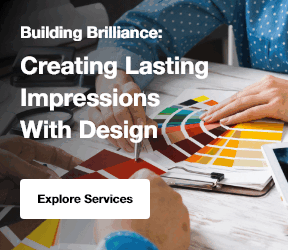In today’s digital-first world, your website often serves as the first impression your business makes.
Whether you operate in a B2B (Business-to-Business) or B2C (Business-to-Consumer) model, the way your website is designed, structured, and optimized can significantly influence engagement, trust, and conversions.
While B2B and B2C websites share the ultimate goal of attracting and converting visitors, their strategies, design approaches, and content priorities differ fundamentally.
A B2B site needs to cater to multiple decision-makers, support long sales cycles, and convey credibility. A B2C site, on the other hand, often focuses on emotional appeal, quick conversions, and user-friendly experiences for individual consumers.
This blog examines the key differences between B2B and B2C website development, focusing on design strategies, content planning, UX considerations, and marketing integration.
By the end, you’ll understand how to tailor your website to your audience, driving better engagement and results.
What Is B2B Website Development?
B2B website development involves designing websites for businesses that sell products or services to other businesses.
Unlike consumer-focused websites, B2B sites must cater to complex buying processes that often involve multiple stakeholders, long sales cycles, and high-value transactions.
A successful B2B website communicates professionalism, authority, and reliability while guiding prospects through the buyer journey.
This means incorporating educational content such as whitepapers, case studies, and detailed product information, which helps decision-makers evaluate solutions and justify purchases internally.
Many companies also look for B2B website development services that integrate with broader marketing strategies, including Linkedin Marketing Services, email automation, and account-based marketing (ABM).
These integrations allow businesses to track user behavior, nurture leads, and create personalized experiences for high-value accounts.
For professional B2B website solutions, you can explore our B2B Web Design Services, which focus on functionality, credibility, and lead generation.
Explore Our B2B Website Development Services!
What Is B2C Website Development?
B2C website development focuses on creating engaging experiences for individual consumers.
These sites prioritize ease of use, visual appeal, and quick conversion. Unlike B2B websites, B2C sites often deal with shorter buying cycles, so the emphasis is on simplifying decision-making and driving immediate action.
Successful B2C websites rely heavily on emotional appeal and storytelling. Eye-catching visuals, videos, product highlights, and social proof all play a role in persuading users to take action.
Many brands turn to a B2C web development agency to implement e-commerce functionality, including seamless checkout processes and personalized recommendations, which are crucial for encouraging purchases and repeat business.
Additionally, e-commerce functionality, including seamless checkout processes and personalized recommendations, is crucial for encouraging purchases and repeat business.
B2C websites also prioritize mobile optimization, as consumers increasingly browse and shop on smartphones and tablets.
Fast-loading pages, intuitive navigation, and responsive design are critical for maintaining engagement and reducing bounce rates.
For businesses targeting individual consumers, our B2C Web Design Services focus on creating visually engaging, conversion-oriented websites.
Explore Our B2C Web Development Services!
7 Key Differences Between B2B and B2C Websites
Understanding the differences between B2B and B2C website development is crucial to designing a site that aligns with business goals and user expectations. These differences can be broken down into audience targeting, buyer journey, content strategy, design, and marketing integration.
| Aspect | B2B Websites | B2C Websites |
|---|---|---|
| Audience Targeting | Targets specific professional audiences (industries, roles, decision-makers). Messaging is professional, data-driven, and ROI-focused. Addresses multiple personas (technical, financial, operational). | Targets a broad consumer audience. Messaging is emotional, lifestyle-driven, and focused on convenience/personal satisfaction. Less formal, more visually engaging. |
| Buyer Journey & Decision-Making | Longer buying cycle with multiple stakeholders. Requires educational content (whitepapers, webinars, case studies). Focus on lead nurturing through forms, gated content, and landing pages. | Shorter, often impulsive buying journey. Requires clear product descriptions, quick paths to purchase, and features like reviews, promotions, and recommendations. |
| Content Strategy | Educational and trust-building: case studies, technical docs, industry reports, long-form blogs. Highlights ROI, expertise, and authority. | Engaging and persuasive: product descriptions, lifestyle images, how-to videos, and social proof. Focused on simplifying the buying process and driving action. |
| Design & User Experience | Professional, clear, and functional. Clean typography, structured layouts, and trust-focused design. Includes interactive lead capture (demo/consultation forms). | Visually dynamic and emotionally appealing. Bold visuals, intuitive navigation, mobile-first design. Guides users quickly toward purchases and conversions. |
| SEO & Marketing Integration | Focus on long-tail, niche keywords (industry-specific, role-based). Integrated with LinkedIn, Email Marketing, and ABM campaigns for lead nurturing. | Focus on high-volume, trend/product-related keywords. Relies on social media marketing, retargeting ads, e-commerce optimization, and promotions. |
| Conversion Rate Optimization (CRO) | Focused on lead capture and nurturing: downloadable resources, demo requests, ABM campaigns, and personalized landing pages. | Focused on direct sales and quick conversions: A/B testing, limited-time offers, and personalized product recommendations. |
| Analytics & Performance Monitoring | Tracks multi-touch engagement (landing pages, downloads, forms). Integrated with CRM to evaluate lead quality and account-level activity. | Tracks conversion rate, average order value, bounce rate, and retention. Insights optimize shopping experiences and revenue growth. |
Why Understanding These Differences Matters?
Failing to design a website tailored to your business model can result in missed opportunities, poor engagement, and lower conversions.
A B2B company that uses a flashy, consumer-centric design risks undermining its credibility, while a B2C brand that uses a technical, professional layout may confuse or overwhelm its audience.
By aligning your website with the needs of your audience and the unique dynamics of your market, you can create a site that not only attracts visitors but also guides them through meaningful interactions, builds trust, and drives measurable results.
Top 7 Best Practices for B2B Website Development
Building a successful B2B website requires clarity, authority, and functionality to meet the needs of multiple decision-makers and support long sales cycles.
1. Clear and Intuitive Navigation
-
Design a structured navigation system that allows multiple stakeholders (technical, financial, and operational) to quickly find the information they need.
- Use logical menu categories (Solutions, Industries, Resources, About Us) and mega menus for complex offerings.
- Ensure that key pages like Case Studies, Pricing, and Contact Sales are always easy to locate.
2. Establishing Authority and Credibility
- Showcase case studies, whitepapers, testimonials, and client success stories to demonstrate expertise.
- Incorporate certifications, awards, and industry recognition badges. Publish thought leadership content such as long-form blogs, research reports, and expert insights, while also highlighting web design and development services that reinforce your authority.
- Publish thought leadership content such as long-form blogs, research reports, and expert insights.
3. Lead Capture and Nurturing
- Use strategically placed forms, gated content, and landing pages to capture qualified leads.
- Provide downloadable assets (eBooks, industry reports) to encourage engagement.
- Implement progressive profiling to gather data over time without overwhelming users.
4. Marketing Automation and Personalization
- Integrate with marketing automation platforms to nurture leads with tailored email sequences.
- Leverage LinkedIn campaigns and ABM (Account-Based Marketing) tools to deliver customized experiences for high-value accounts.
- Personalize landing pages and content recommendations based on user behavior and industry.
5. Mobile and Multi-Device Optimization
- Ensure seamless desktop and mobile experiences for busy professionals.
- Optimize forms and resources for mobile downloads.
- Use responsive layouts and scalable typography for better readability.
6. SEO and Content Strategy for B2B
- Focus on long-tail, industry-specific keywords.
- Optimize for queries related to pain points (e.g., “cloud security solutions for healthcare”).
- Build a robust resource library with blogs, webinars, and whitepapers optimized for search engines.
7. Analytics and CRM Integration
- Track multi-touch engagement across content downloads, webinars, and demo requests.
- Integrate with a CRM system (like HubSpot or Salesforce) to evaluate lead quality and account-level activity. Use data insights to refine targeting and messaging strategies, and leverage tools that help businesses understand how to measure brand awareness effectively.
- Use data insights to refine targeting and messaging strategies.
Explore Our Web Design And Development Service!
Top 7 Best Practices for B2C Website Development
A high-performing B2C website focuses on emotional engagement and seamless shopping experiences to drive quick conversions and customer loyalty.
1. Emotional Engagement and Visual Storytelling
- Use high-quality visuals, lifestyle photography, and videos to create an emotional connection with consumers.
- Showcase the lifestyle benefits of products rather than just their features.
- Use storytelling to highlight how products improve everyday life.
2. Simplified and Frictionless Shopping Experience
- Streamline navigation to prioritize Shop, Categories, Bestsellers, and Deals.
- Reduce checkout steps with guest checkout, multiple payment options, and autofill. Provide clear product descriptions, size guides, and FAQs to minimize purchase hesitation, and incorporate ecommerce development services that make the entire journey seamless.
- Provide clear product descriptions, size guides, and FAQs to minimize purchase hesitation.
3. Mobile-First Optimization
- Prioritize mobile responsiveness since many B2C purchases happen on smartphones.
- Use large, tappable buttons and simplified forms for smaller screens.
- Ensure fast-loading product pages to reduce bounce rates.
4. Personalization and Recommendations
- Implement AI-driven product recommendations based on browsing and purchase history.
- Use personalized promotions and discounts to encourage repeat purchases.
- Segment customers by demographics or behavior to serve tailored offers.
5. Social Proof and Trust-Building
- Feature customer reviews, ratings, and testimonials prominently on product pages.
- Showcase user-generated content (UGC), such as Instagram photos or customer videos.
- Display trust signals like secure payment badges and free return policies.
6. Marketing Integration and Retargeting
- Run retargeting campaigns to re-engage users who abandoned carts or browsed without purchasing.
- Leverage social media marketing on platforms like Instagram, TikTok, and Facebook to boost brand reach. Use seasonal campaigns, flash sales, and influencer collaborations to drive conversions while applying what is the digital marketing strategy that tracks users across the web? techniques to refine targeting.
- Use seasonal campaigns, flash sales, and influencer collaborations to drive conversions.
7. Conversion Optimization and Analytics
- Conduct A/B testing for product pages, CTAs, and checkout processes.
- Track key metrics like conversion rate, average order value, bounce rate, and customer lifetime value. Use insights to refine promotional strategies, optimize UX, and ultimately increase conversion rate for better ROI.
- Use insights to refine promotional strategies and improve user experience.
Conclusion
While B2B and B2C websites share the goal of converting visitors into customers, their approaches differ significantly.
B2B websites focus on credibility, education, and long-term relationships, while B2C websites prioritize emotional engagement, speed, and convenience.
Understanding these differences allows businesses to create websites that align with their target audience, support broader marketing strategies, and drive measurable results.
For many brands, especially smaller ones, choosing the best website builders for small business becomes the first step in creating a digital presence that fuels growth.
Centric’s well-designed website is not just a digital presence; it is a business asset that fuels growth, strengthens trust, and enhances brand reputation.
Explore how our strategic focus on automation and innovation, including their ethos of Automate Everything, serves as both a guiding principle and a competitive edge in digital transformation services.









